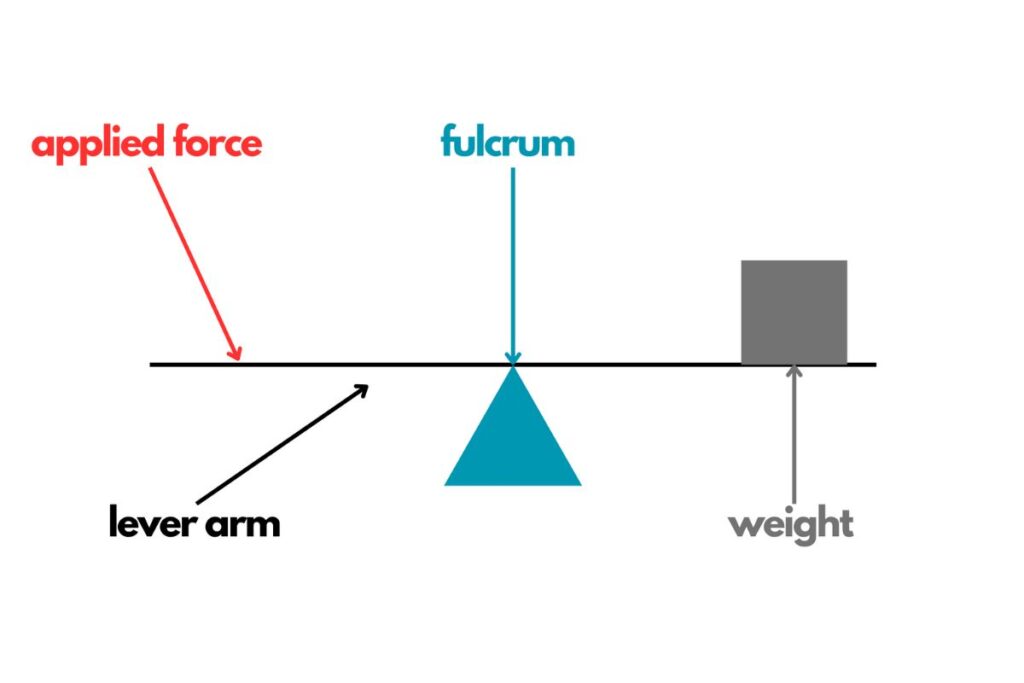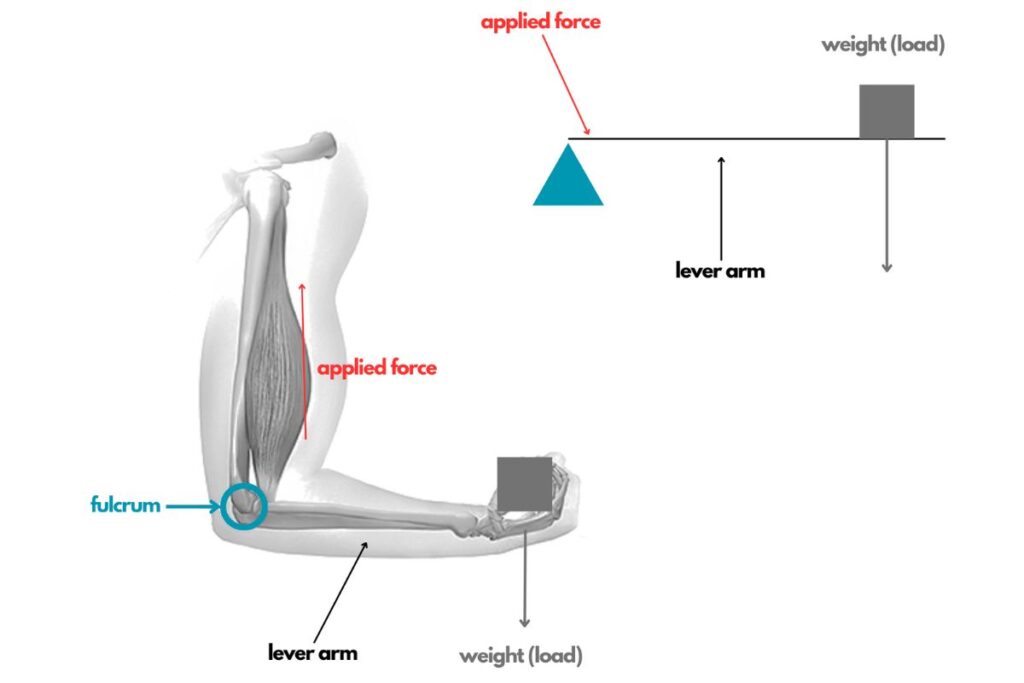Ideal Weightlifting Weight and Height Ratio
You can’t change your height. But you can change your weight.
In this article, we will explain why short lifters can lift more when compared to a taller lifter with the same weight, and we will talk about the ideal weightlifting weight and height ratio.
So, the first thing to do is to measure your height. After that, consult the table below to find what weight would be ideal for your height so that you achieve the perfect height/weight balance for weightlifting.
For men:
| Height (feet/cm) | Ideal Weight (lb/kg) |
|---|---|
| 5’3’’-5’5’’ (160-166cm) | 147.7 lbs (67 kg) |
| 5’6’’-5’8’’ (167-173 cm) | 160.9 lbs (73 kg) |
| 5’9’’-5’11’’ (174-180 cm) | 178.6 lbs (81 kg) |
| 5’12’’-6’2’’ (181-187 cm) | 196.2 lbs (89 kg) |
| 6’3’’-6’5’’ (188-194 cm) | 211.6 lbs (96 kg) |
| 6’6’’-6’8’’ (195-201 cm) | 224.9 lbs (102 kg) |
For women:
| Height (feet/cm) | Ideal Weight (lb/kg) |
|---|---|
| 4’9’’-4’12’’ (146-152 cm) | 99.2 lbs (45 kg) |
| 5’0’’-5’2’’ (153-159 cm) | 108 lbs (49 kg) |
| 5’3’’-5’5’’ (160-166cm) | 121 lbs (55 kg) |
| 5’6’’-5’8’’ (167-173 cm) | 130 lbs (59 kg) |
| 5’9’’-5’11’’ (174-180 cm) | 141 lbs (64 kg) |
| 5’12’’-6’2’’ (181-187 cm) | 156 lbs (71 kg) |
Adjusting your body weight to fit the optimal ratio can improve your competitiveness in a specific weight class.
One of the ways you can achieve peak performance in weightlifting is to strike the perfect balance between your body weight and your height. Regardless of whether you’re male or female, and regardless of your raw strength – it’s all about physics.
Now, let’s do some physics and some science.
The Physics Behind Weightlifting and Height Explained
So, you have two lifters. One shorter, one taller. They both weigh the same; let’s say 165 lb (75 kg). They’re both expert athletes, they use the same technique, are both healthy, and there’s no difference in performance, apart from the fact that they are of different heights.
And the shorter lifter ends up lifting more. How? Why?
As stated above, it’s basic physics, and it can be explained in one word – “lever”.
What is a lever? – A lever is a simple mechanism consisting of a rigid bar that pivots around a fixed point called ‘fulcrum’, which is used to amplify force.

How does a lever work? – The lever applies force on one end to lift/move a load on the other end. The closer the load is to the fulcrum, the less force is needed to lift it.
So, now you might be wondering why you’re reading about levers instead of weightlifting. You’re getting there. In weightlifting, body mechanics plays a pivotal role in determining how much force a lifter can generate. And taller people (usually) have longer limbs.
In humans (rather than rigid bars), the core principle behind the concept is called ‘third-class lever’. That type of lever has the effort (force) applied between the joint (fulcrum) and the weight being lifted (load).
How you can quickly test this: Hold a kettlebell/dumbbell in your hand. While holding the weight, bring your hand close to your chest and try moving it up and down.
Next, fully extend your arm until it’s completely straight, and try moving the weight up and down again.
The weight of the kettlebell/dumbbell hasn’t changed, but it appears/feels much heavier now, right?
To better visualize this in weightlifting terms, imagine a bicep curl. You’re holding a dumbbell in your hand. And the weight of the dumbbell is forcing your hand downwards (gravity).
To counteract that force, you’re engaging your bicep muscles and exerting force to lift your hand, which is being forced downwards.
If the force that you exert with your biceps is greater than the force that the dumbbell weight is exerting onto your wrist, then it’ll move upwards (instead of downwards).
Your elbow, in this case, is the fulcrum, which is the endpoint of the lever. And the lever is your forearm, which connects your elbow (the fulcrum) and your wrist (the load).
In this case, you can better visualize how a longer lever (your forearm) can affect you in such a way that the force produced by exerting your biceps needs to be greater compared to the force required if the lever (your forearm) is shorter.

As a result, athletes with longer limbs must exert more force to lift the same weight as those with shorter limbs.
This means that taller athletes typically require more muscle mass to achieve the same lifting results as shorter athletes.
And for this reason, if you’re competing in the same weight category, the shorter athletes have a natural/mechanical advantage over taller ones.
5 Reasons Why Height to Weight Ratios Are Different In Male and Female Lifters
Men and women are different. There are five (main) factors that affect/determine the different weight ratios for both sexes.
*all five factors below are determined on average by the majority of the population; there are always exceptions to the rule.
1. Limb Proportions
On average women tend to have proportionally shorter torsos and longer legs compared to men. This directly affects the leverage mechanics, which were explained earlier.
However, there are exceptions to the rule, and you might find women with longer arms, and compared to men, they would still underperform.This is because limb length, while important, is not the onlyfactor when it comes to determining ideal weight and height ratios.
2. Muscle Mass
Men generally have a higher percentage of muscle mass compared to women due to hormonal differences (testosterone).
3. Body Composition
Men (on average) tend to have lower body fat percentages than women. The higher body fat percentage affects how much muscle mass can be supported at a given height/weight.
4. Difference in Hormonal Levels
You could say that testosterone is the hormone that makes men men, while estrogen is the hormone that makes women women.
And while both men and women produce both hormones, men have significantly higher levels of testosterone, and women have much higher levels of estrogen.
The difference in hormone levels contributes to greater muscle mass and overall strength capacity in favor of male lifters.
5. Bone Density
On average women tend to have proportionally shorter torsos and longer legs compared to men. This dire
Body Response to Training
It is a common myth that men tend to gain more muscle mass (and strength) with the same amount of training compared to women. However, science doesn’t support these claims, with multiple research studies showing either no difference or negligible results.
This is why the above hasn’t been listed as one of the determining factors.

